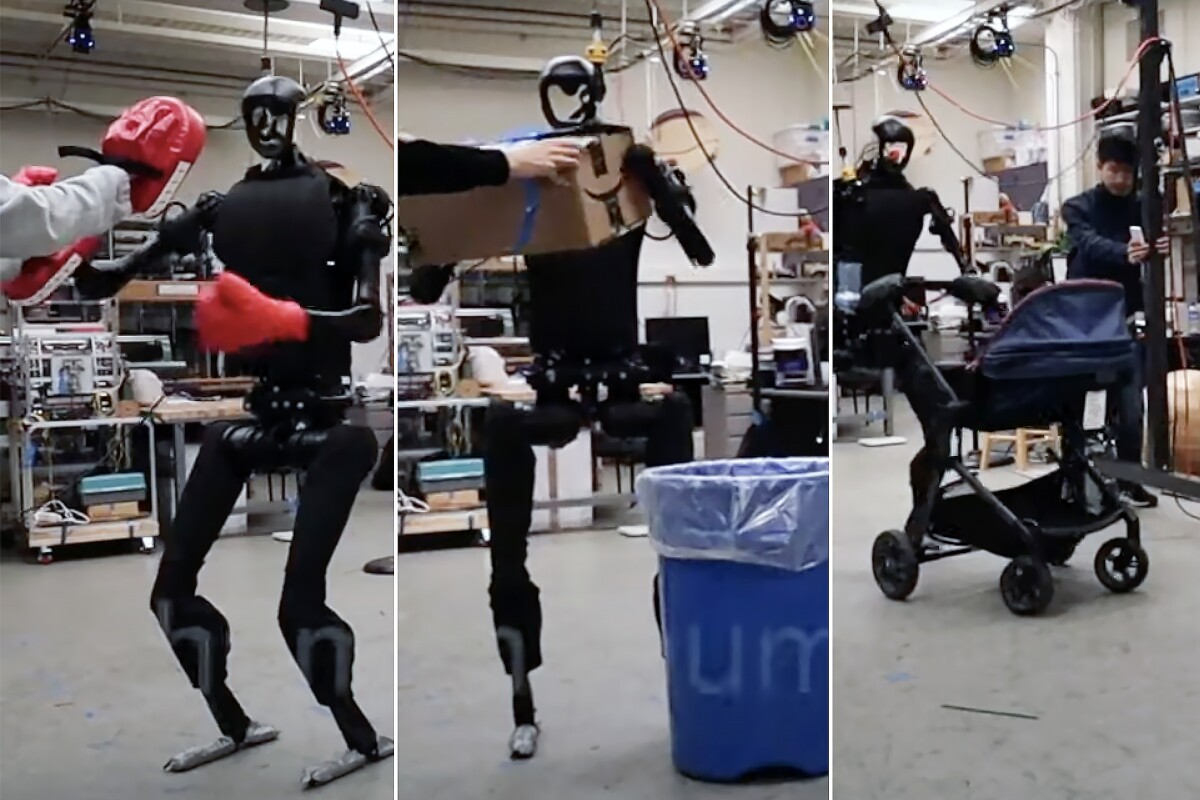Teaching Humanoids to Take over Manual Labor Duties

LeCAR Lab at CMU
Carnegie Mellon University (CMU) scientists have created H2O – Human2HumanOid – a reinforcement learning system enabling a life-sized humanoid robot to be remotely controlled by a human in real-time using just an RGB camera. This raises the question: could manual labor be conducted from afar in the near future?
Overcoming Challenges in Full-Body Control of Humanoid Robots through Reinforcement Learning (RL)
A teleoperated humanoid robot enables the execution of intricate tasks that, currently, are too complex for autonomous robot operation. However, attaining full-body control of human-sized humanoids to mimic our actions in real-time presents significant challenges. This is where reinforcement learning (RL) becomes crucial.
RL, a machine-learning method, replicates the trial-and-error learning process of humans. By employing the reward-and-punishment mechanism of RL, a robot can learn from the feedback of its actions and autonomously determine the most effective pathways to achieve a desired result. Unlike traditional machine learning, RL doesn’t rely on labeled data pairs provided by humans to guide the algorithm.
Revolutionizing Humanoid Robot Control with RL-Based Teleoperation Framework
“H2O teleoperation is a framework rooted in reinforcement learning (RL) that enables real-time whole-body teleoperation of humanoid robots using only an RGB camera,” explained Tairan He, one of the project’s lead researchers from CMU’s LeCAR (Learning and Control for Agile Robotics) Lab, to Tech Xplore.
“The process begins by mapping human movements to humanoid capabilities using an innovative ‘sim-to-data’ approach, ensuring the movements are within the physical constraints of the humanoid. This refined motion dataset then trains an RL-based motion imitator in simulation, which is subsequently deployed to the real robot without further adjustment.”
Harnessing RGB Camera and 3D Pose Estimator for Human Teleoperator Motion Replication
However, through this method, the researchers utilized images captured by an RGB camera, which captures visible light and generates a color image mimicking human vision, along with a 3D pose estimator. This combination enabled H2O to replicate the motions of human teleoperators.
Remarkable Demonstrations of Real-Time Whole-Body Humanoid Teleoperation
The outcomes, showcased in videos captured by the researchers, are quite impressive. They depict H2O kicking a ball, placing a box in a bin, sidestepping in a boxing stance, and walking with a stroller (albeit with a somewhat unsteady gait). As far as the researchers are aware, this marks the initial demonstration of real-time whole-body humanoid teleoperation.
Methodological Insights Published on arXiv Pre-print Platform
The CMU researchers detailed their methodology in a paper published on the arXiv pre-print platform.
In a longer video shared by the LeCAR Lab at CMU, additional features of H2O are showcased. These include the robot punching an Amazon box while sporting boxing gloves and subsequently celebrating with a victory salute (which may be interpreted as robot retaliation), jumping backward, and enduring a kick to the back from a human to exhibit its durability.
Exploring Expanded Input Integration and Lower-Body Tracking for Enhanced Functionality
Additional investigations will explore the integration of inputs beyond those from the human teleoperator, like force feedback and verbal interaction, which may improve H2O’s functionality. A promising avenue for future exploration involves incorporating lower-body tracking to enable the humanoid to execute more intricate human movements, such as those seen in sports and dance.
This prompts a return to the initial question: Could H2O, or a similar system, facilitate remote work? CMU’s announcement about H2O has sparked insightful discussions on Reddit’s r/Futurology subreddit.

Advantages of Teleoperated Humanoids for Job Retention and Hazardous Tasks
Certainly, employing teleoperated humanoids offers several advantages, including the retention of human jobs and the ability to utilize them for hazardous tasks or search-and-rescue operations in remote or inaccessible areas.
However, there are notable drawbacks, particularly concerning employment. As highlighted by Reddit user lughnasadh, “[I]t opens up more avenues for job offshoring in rich countries.” Additionally, there’s the concern of a slippery slope, where teleoperated robots today could pave the way for fully autonomous robots in the future, potentially displacing jobs.
Interestingly, a 2022 study investigating public acceptance of teleoperated robots for labor tasks revealed that many individuals are receptive to remote work with lower wages compared to on-site positions. However, this underscores the ongoing uncertainty in the rapidly evolving AI/robotics realm, where only time will reveal the true implications.
Read the original article on: New Atlas
Read more: NVIDIA Aims to Speed Up Humanoid Development with Project GR00T










